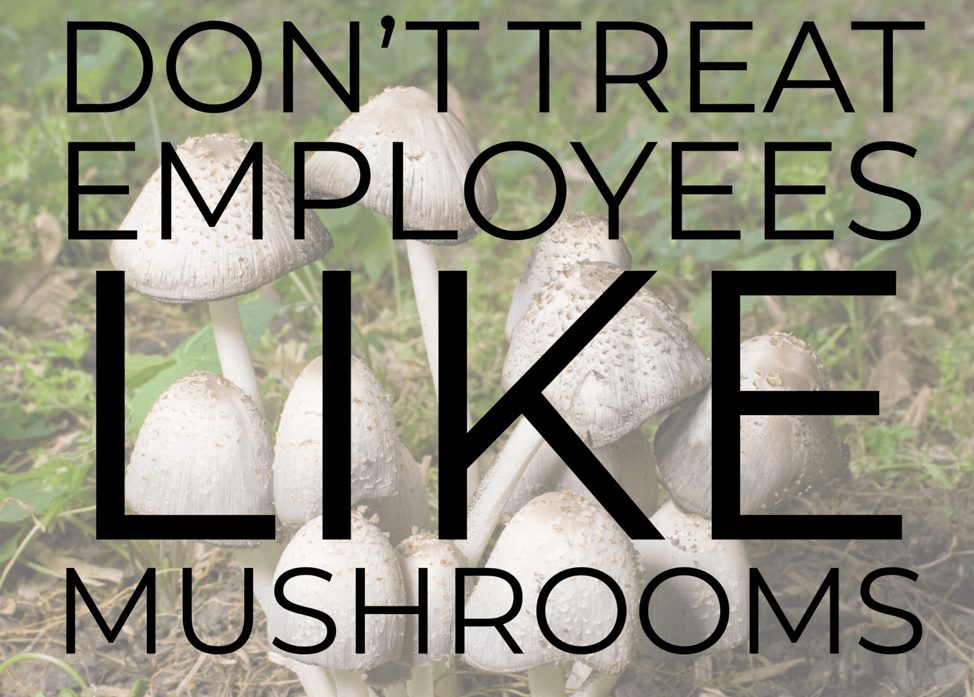Most business leaders recognize the importance of restaurant corporate communications, but very few companies actively invest in developing robust communication channels or in building a sustainable corporate culture.
Done with intention and authenticity, communications becomes a strategic lever pulled to share a business’s values with the public. It’s as essential to a restaurant’s operation as its menu offerings and food suppliers. These practices have quantifiable impacts across a number of metrics, including recruiting, retention, reduced turnover, increased engagement, growth, expansion, same-store sales, net promoter scores, and more.
Building and executing an effective restaurant corporate communications plan requires commitment from the top and sustained, deliberate action and investment, but these up-front costs are paid back with interest.
1. Employees Aren’t Bricklayers; They’re Building a Cathedral
The old adage “loose lips sink ships” might encourage some leaders to share information only on a need-to-know basis. But, as long as we’re trading in military metaphors, it’s worth pointing out that the first thing generals try to do is knock out their enemy’s communications.
Though no one’s going to war over same-store sales or franchise rights, these examples signal how important a strong communications plan is to most large operations.

Employees aren’t mushrooms: you can’t leave them in the dark and feed them compost. They’ll know if they’re only hearing half the story — and they’ll invent the other half if it’s not provided. This is particularly powerful for today’s workforce, largely impacted by millennials who identify with a sense of purpose and value trust and transparency.
Finding the correct balance between discretion and honesty will impart confidence in the executive team to employees as well as customers, reporters, investors, landlords, community members, and other stakeholders. This kind of communication also shows employees how their role in the company feeds into the organization’s larger strategies. And, indeed, people are five times more committed when they feel they’re a part of an initiative.

Commitment leads to associate engagement, which the vast majority (90%) of business owners see as vital to their companies’ futures. They’re right to put so much emphasis on employee commitment: companies with actively engaged employees earn 2.5x more than companies with disengaged employees. This engagement drives productivity, which improves by 20–25% in organizations with connected employees.
And yet, only 25% of US businesses have implemented an associate engagement program.
2. It Pays to be Optimistic
When CEOs communicate via social channels, it tends to impart a higher level of trust. Tweets and status updates appear more genuine than press releases that suffered under a dozen lawyers’ red pens.
For example, last February, a snowball fight broke out in front of the Shake Shack in Madison Square Park. After the video went viral, the burger chain revealed that the combatants were all Shake Shack team members.

Having the COO take the time to come out and have fun with his employees communicates the brand’s personality — not only to the company’s partners around the world but to consumers and other future partners, be they potential franchisees, journalists and reporters, landlords, or crew-level employees choosing where to apply.
Studies have shown that a staggering 92% of consumers say they trust earned media while only half trust paid ads. Consumers find earned media appealing because it feels natural and authentic, as opposed to traditional TV spots, even the best of which are clearly the product of writers, producers, and publicists.
Crafting a restaurant corporate communications plan that is agile enough to capitalize on these impromptu moments doesn’t just win Facebook Likes: earned media can drive 4x the brand lift of paid media.
3. Honesty is Still the Best Policy
The most retweeted tweet of all time was the result of consumer-brand engagement: Carter Wilkerson asked Wendy’s for a year of free chicken nuggets, and Twitter users went wild supporting the outlandish request. In the end, Wilkerson got his #freenuggs, and Wendy’s got a ton of positive publicity.
Despite this famous example, seven out of eight social-media messages to brands remain unanswered after 72 hours. These companies are ignoring an integral aspect of customer service, a particularly bad choice when 86% of consumers report that their buying decisions are influenced by online reviews.
Starting in 2014, McDonald’s Canada launched “Our Food. Your Questions,” a website where consumers could ask the burger chain anything they wanted. Customers queried everything from what type of cow McDonald’s beef comes from, to when the McRib, McPizza, and Szechuan sauce are coming back.

Considering the amount of disinformation available about McDonald’s, its food — remember the pink slime? — and its corporate practices, this is a radical step in the right direction.
4. A Steal at Twice the Price
What would you do if something went terribly wrong at one of your locations? Maybe a foodborne illness breaks out, or maybe a crew-level employee makes a judgment call that goes against your company’s deepest-held values. How would you respond? A tweet? A press release? An appearance on some morning talk shows?
A survey of business decision-makers who don’t have a crisis communication plan produced some interesting findings. One-third said they haven’t invested in one because it would “rarely… be needed,” despite the fact that 59% of this sample had experienced a crisis at either their current or previous organizations. Another 19% said “it’s too difficult to set up or manage,” and 15% said it was “too expensive.”
The average cost of a crisis is $5.8 million in reputation and brand damage, $4 million in lost productivity, $3.7 million in lost revenue, and $1.6 million in compliance costs. So, what’s more expensive — developing a crisis communications plan or moving forward without one?
Any complex system — be it an organism or an organization — needs an effective communications system to survive. Just as the human body doesn’t wait to build a stomach until it needs to digest food, corporations shouldn’t wait to develop a system for responding to crises until their whole enterprise is at risk.
The benefit of investing in an integrated restaurant corporate communications plan is not simply protecting the brand and its revenue streams. It also builds strong relationships among employees and between the company, its consumers, and its community. Sustainable enterprises are good communicators. They share information between all aspects of their organization and with outside stakeholders as well.
* * *
Aaron Allen & Associates can help develop internal & external messaging programs, foster associate engagement, develop crisis communication plans and manage them when necessary, help strategize investor relations, monitor and manage brand reputation, and work with companies to invent and refine other systems that enhance communication both among teams and with communities.

